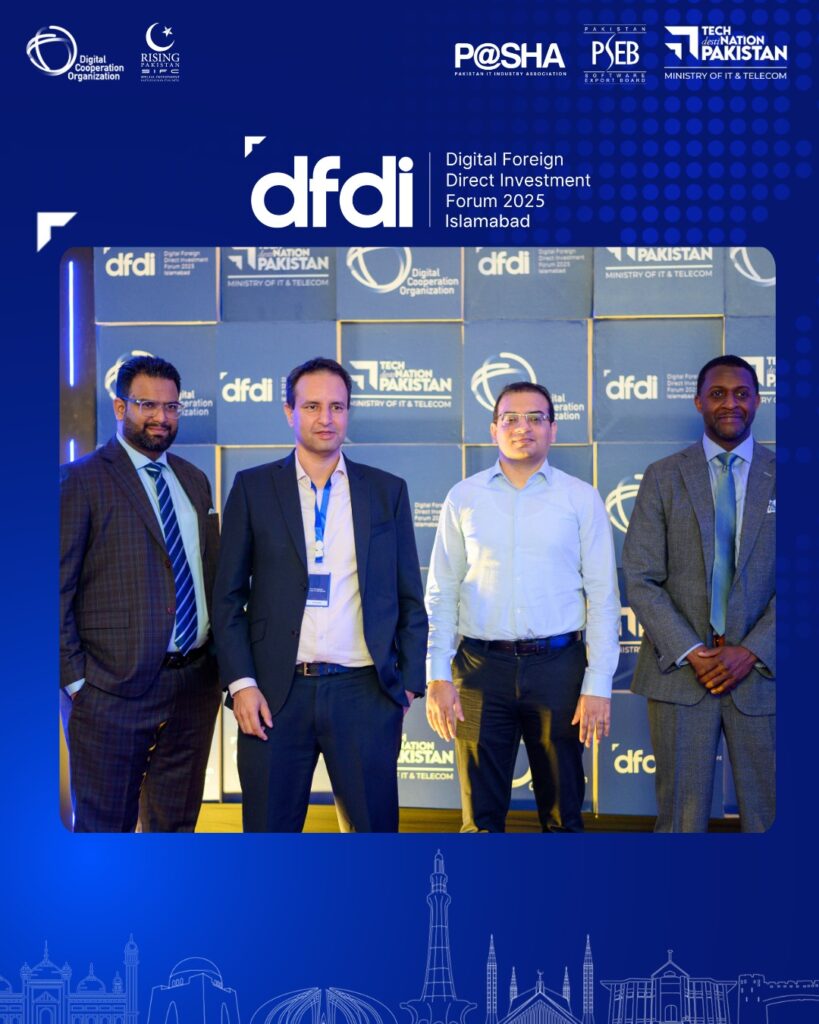Table of Contents
Infrastructure FDI in 2025 – A New Era of Global Investment
Infrastructure FDI in 2025 is at the forefront of global economic development, with countries worldwide recognizing the pivotal role of infrastructure in driving growth and resilience. As the world emerges from recent economic challenges, foreign direct investment in infrastructure is experiencing a renaissance, focusing on sustainability, digitalization, and inclusivity.
Global Trends Shaping Infrastructure FDI in 2025
Surge in Renewable Energy Investments
Renewable energy continues to dominate infrastructure FDI, with investments pouring into solar, wind, and hydroelectric projects. The World Bank’s approval of a $350 million grant for Malawi’s Mpatamanga Hydropower Project exemplifies this trend, aiming to double the country’s electricity capacity and provide power to over a million households.

Digital Infrastructure Expansion
The demand for robust digital infrastructure is accelerating, driven by the proliferation of data centers, 5G networks, and cloud computing. Investors are channeling funds into projects that enhance connectivity and support the digital economy, recognizing the long-term value of such assets.
Focus on Emerging Markets
Emerging economies are becoming focal points for infrastructure FDI due to their growth potential and need for development. Projects like the Khyber Pass Economic Corridor in Pakistan and the Kyaukphyu Deep-Sea Port in Myanmar highlight the strategic investments being made to enhance regional connectivity and trade.
Challenges and Considerations in Infrastructure FDI in 2025
While Infrastructure FDI in 2025 presents immense opportunities, it also brings a host of challenges that investors, policymakers, and project developers must carefully consider. Understanding these hurdles is crucial for informed decision-making and sustainable investment strategies.
1. Regulatory and Bureaucratic Complexities
One of the most significant barriers in Infrastructure FDI in 2025 is navigating the often complex and inconsistent regulatory frameworks across different countries. In many emerging economies, bureaucratic red tape, outdated legal systems, and unclear land acquisition processes can significantly delay project approvals and execution.
Investors must also contend with frequent policy changes, lack of transparency, and insufficient protection for foreign investments in some jurisdictions. These risks increase project uncertainty and can affect long-term returns.
Tip: Partnering with local legal advisors and maintaining open communication with regulatory bodies can mitigate these challenges.
2. Political Instability and Geo-Political Risks
Infrastructure FDI in 2025 is particularly vulnerable to political dynamics. Government transitions, policy reversals, or political unrest can stall infrastructure projects or even lead to expropriation in extreme cases.
For example, sudden shifts in foreign investment policy or trade relationships can deter long-term investor confidence. In cross-border projects like transport corridors or pipelines, geopolitical tension can halt progress abruptly.
Tip: Risk assessments, political risk insurance, and public-private partnerships (PPPs) with sovereign guarantees can offer stability and protection.
3. Currency Fluctuations and Economic Volatility
Many infrastructure projects require long-term capital investment, often in foreign currencies. Exchange rate volatility can erode profitability and affect debt servicing capabilities, particularly in countries with unstable economies or weak currencies.
Infrastructure FDI in 2025 must account for global economic shocks, inflation risks, and interest rate fluctuations, which may impact capital costs and financial feasibility.
Tip: Structuring investments in local currencies where feasible and using hedging instruments can help manage financial risks.
4. Land Acquisition and Community Opposition
Land acquisition for infrastructure can be a lengthy and contentious process. Local communities may resist displacement, especially in regions where land rights are poorly defined or cultural heritage is at stake.
Community opposition can lead to legal battles, social unrest, or bad publicity — all of which can disrupt project timelines and budgets.
Tip: Engaging stakeholders early, practicing ethical resettlement, and offering fair compensation can build trust and social license to operate.
5. Environmental and Social Compliance
Modern investors are under increasing pressure to meet Environmental, Social, and Governance (ESG) standards. Infrastructure projects—such as highways, dams, or power plants—can have significant ecological footprints.
Failure to comply with environmental regulations or to conduct proper Environmental Impact Assessments (EIAs) may lead to sanctions, project shutdowns, or reputational damage.
Infrastructure FDI in 2025 is expected to be sustainable and climate-resilient, aligning with global frameworks like the UN SDGs and Paris Climate Agreement.
Tip: Incorporate sustainable design and consult environmental experts from the outset of planning.
6. Return on Investment and Revenue Risk
Long-term ROI is a critical concern in Infrastructure FDI in 2025. Some infrastructure—especially in public utilities—may offer limited direct revenues or face regulated tariffs that impact profitability.
Toll roads, bridges, and energy plants depend on consistent demand. If user projections are overly optimistic or pricing is politically sensitive, returns may fall short.
Tip: Conduct robust demand assessments and consider models such as viability gap funding or availability payments to ensure financial sustainability.
7. Technology and Operational Risks
In 2025, many infrastructure projects are integrating smart technologies, IoT devices, and automated systems. While this enhances efficiency, it also introduces risks related to cybersecurity, system failures, and technology obsolescence.
Infrastructure FDI in 2025 must prepare for digital disruptions and ensure that technical expertise is available for ongoing operation and maintenance.
Tip: Include IT risk mitigation plans and partner with experienced digital infrastructure providers.
8. Capacity and Governance Constraints
In some low-income or developing countries, there may be insufficient institutional capacity to implement large infrastructure projects efficiently. Corruption, poor governance, and lack of skilled labor can all diminish project quality and increase costs.
Tip: Work closely with multilateral agencies (like IFC or ADB), which can help enforce governance standards and improve institutional capacity.
9. Climate Resilience and Disaster Risk
With the increasing frequency of extreme weather events, infrastructure FDI must now incorporate climate resilience into design and construction. Infrastructure that fails to withstand climate shocks—floods, hurricanes, heatwaves—risks catastrophic failure and financial loss.
Infrastructure FDI in 2025 needs to be future-proof, with adaptive measures integrated from day one.
Tip: Conduct climate risk modeling and align with global resilience-building standards such as those set by the Climate Bonds Initiative or IFC’s Performance Standards.
Sectoral Insights: Where is Infrastructure FDI Heading?
Infrastructure FDI in 2025 is no longer limited to traditional sectors like roads and bridges. It is expanding into new, dynamic areas fueled by digital transformation, climate change, and evolving global demands. As governments strive to rebuild post-pandemic economies and align with sustainable development goals (SDGs), foreign investors are diversifying their portfolios to match new opportunities.
Let’s explore the key sectors attracting the highest volumes of Infrastructure FDI in 2025:
1. Renewable Energy Infrastructure
The shift to green energy is perhaps the most powerful force shaping Infrastructure FDI in 2025. Governments worldwide are investing heavily in solar, wind, hydroelectric, and bioenergy infrastructure to meet net-zero emissions targets.
- Why it matters: Clean energy not only aligns with ESG goals but also provides stable, long-term returns due to government incentives and power purchase agreements (PPAs).
- Countries leading the way: India, Brazil, Vietnam, and South Africa are hotspots for solar and wind energy investment.
🌍 Green Power is the Future
CTA: [Explore Renewable Energy Investment Projects →]
2. Digital and Communication Infrastructure
Digital transformation is pushing infrastructure boundaries far beyond roads and railways. In 2025, Infrastructure FDI is flooding into:
- 5G network expansion
- Fiber-optic broadband
- Data centers
- Satellite infrastructure
These assets are essential for smart cities, e-commerce, remote work, and digital economies. Private equity and sovereign wealth funds are increasingly targeting digital infrastructure due to its resilience and demand growth.
- Top regions attracting FDI: Southeast Asia, Africa, and parts of Eastern Europe.
📶 Invest in Tomorrow’s Connectivity
CTA: [Get Started with Digital Infrastructure FDI →]
3. Urban Transit and Smart Mobility
With rapid urbanization and rising pollution, there’s a push for sustainable and smart urban transit systems. Infrastructure FDI in 2025 is supporting:
- Metro and light rail systems
- Electric bus networks
- Integrated urban mobility platforms
Cities like Cairo, Jakarta, and Lagos are undergoing massive overhauls of public transit systems with the help of foreign investment and development finance institutions.
- Smart Mobility Insight: FDI is not just building systems, but also funding software-driven solutions like real-time traffic management and ticketing apps.
4. Water and Sanitation Infrastructure
While less glamorous, water infrastructure is vital—especially in regions facing water scarcity. In 2025, foreign investors are increasingly interested in:
- Wastewater treatment plants
- Desalination projects
- Urban water supply systems
These sectors provide high social impact and long-term revenue through utility models and public-private partnerships (PPPs).
- FDI Trend: Middle East and North Africa (MENA) regions are leading with innovative desalination projects.
5. Transport and Logistics Corridors
Despite the rise of digital infrastructure, transport remains a foundation of Infrastructure FDI in 2025. Strategic investments are focused on:
- Highways and expressways
- Airports and seaports
- Multimodal logistics hubs
These sectors are critical to facilitating trade and reducing logistics costs, particularly in regions participating in global supply chain restructuring.
- Investment Focus: The African Continental Free Trade Area (AfCFTA) is driving major corridor investments in Africa.
🚚 Drive Logistics Efficiency Worldwide
CTA: [Find Logistics Infrastructure Projects →]
6. Social Infrastructure: Health and Education
Post-pandemic recovery has increased demand for foreign capital in health and education infrastructure. Infrastructure FDI in 2025 is targeting:
- Hospital networks and telemedicine hubs
- Vocational training centers and digital classrooms
- Public-private models for low-income housing
- Why it matters: These sectors offer steady, impact-driven returns while addressing critical societal needs.
7. Climate-Resilient Infrastructure
FDI is also moving toward infrastructure designed to resist climate risks—think flood control systems, resilient bridges, and urban cooling technologies.
Focus Keyword Insight: As Infrastructure FDI in 2025 grows, resilience is a non-negotiable component for international investors seeking to future-proof their assets.
Future Outlook: Sustaining Momentum in Infrastructure FDI
The future of Infrastructure FDI in 2025 and beyond looks promising, with continued emphasis on sustainability, innovation, and inclusivity. As global challenges evolve, infrastructure investment will play a vital role in building resilient economies and societies.

Frequently Asked Questions (FAQs)
Q1: What is driving the increase in Infrastructure FDI in 2025?
A: The surge is driven by the global push for sustainable development, digital transformation, and the need to modernize aging infrastructure.
Q2: Which sectors are attracting the most Infrastructure FDI?
A: Key sectors include renewable energy, digital infrastructure, transportation, urban development, and water management.
Q3: What are the risks associated with Infrastructure FDI?
A: Risks include regulatory hurdles, political instability, financing challenges, and environmental and social impacts.
Q4: How can investors mitigate risks in Infrastructure FDI?
A: Conducting thorough due diligence, engaging in public-private partnerships, and adhering to environmental and social governance standards are effective strategies.
Q5: What is the role of emerging markets in Infrastructure FDI?
A: Emerging markets offer significant growth potential and are attracting FDI to develop essential infrastructure and boost economic development.
Conclusion: Embracing Opportunities in Infrastructure FDI
Infrastructure FDI in 2025 presents a landscape rich with opportunities for investors, governments, and communities. By focusing on sustainable and inclusive development, stakeholders can drive economic growth and resilience. Staying informed and proactive is key to capitalizing on the evolving trends in infrastructure investment.
Follow us on Facebook for Quick Response & Quires – Digital Foreign Direct Investment (DFDI)
